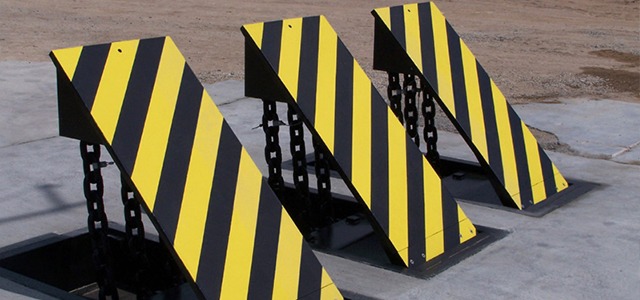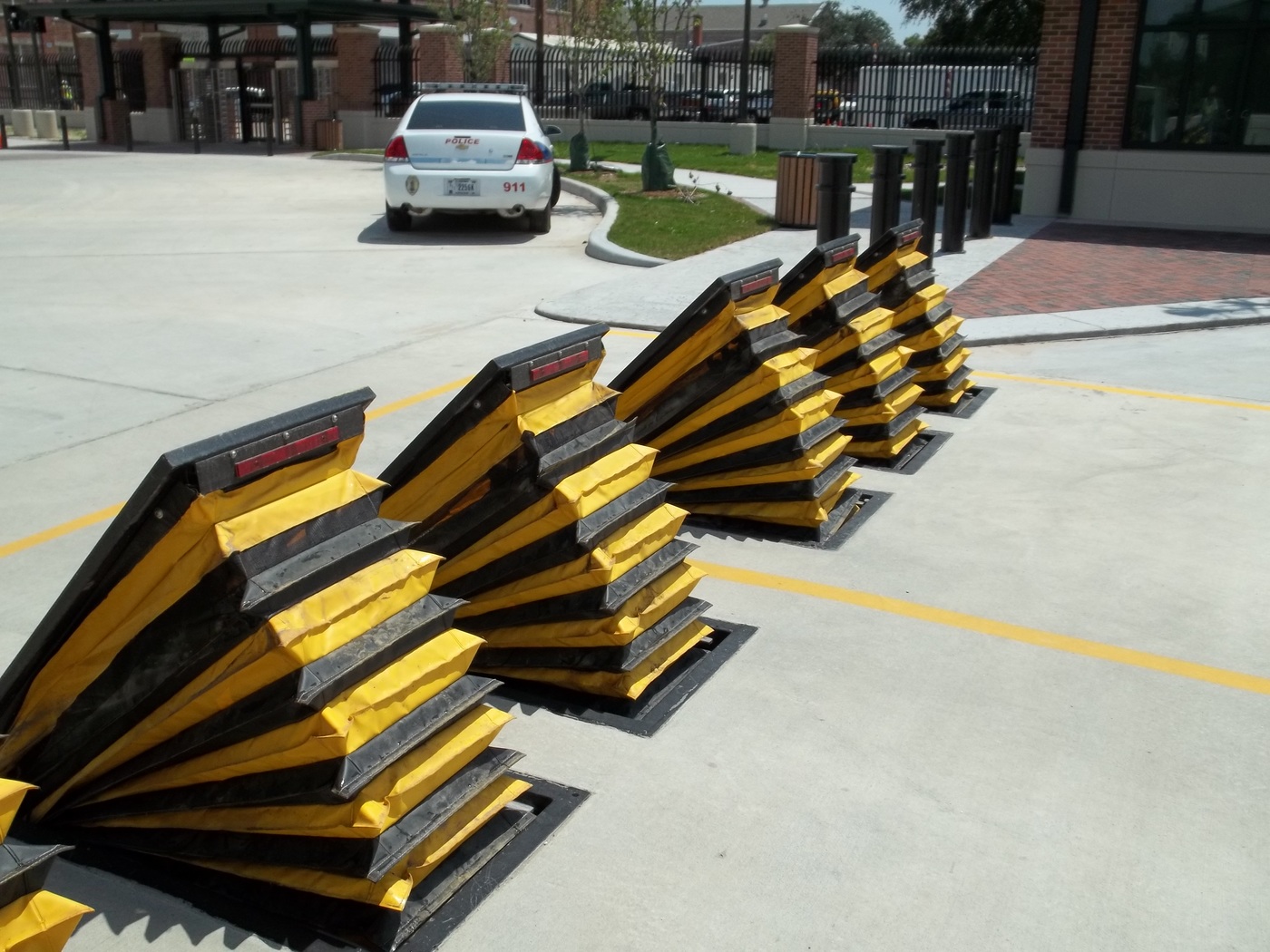The 45-Second Trick For Wedge Barriers
Table of ContentsWhat Does Wedge Barriers Do?All About Wedge Barriers

The Best Guide To Wedge Barriers
g., springtime support 65 )may be dealt with to the end of the spring pole 58 to allow compression of the springtimes 60. As the springtimes 60 are pressed in between the spring supports 62, the springtime setting up 54 generates a pressure acting on the cam coupled to the springtime rod 58 in a direction 66. As an example, the continuing to be force put on
the web cam to deploy the wedge plate 16 may be provided by an electromechanical actuator 84 or various other actuator. The springtime assembly 54 and the actuator 84(e. g., electromechanical actuator)may operate with each other to convert the web cam and lift the wedge plate 16.
As stated over, the spring assembly 54 puts in a consistent pressure on the web cam, while the electromechanical actuator may be managed to apply a variable pressure on the camera, consequently enabling the training and reducing( i. e., releasing and retracting )of the wedge plate 16. In specific embodiments, the consistent force applied by the springtime assembly 54 may be adjustable. g., electromechanical actuator) is disabled. As will certainly be appreciated, the springtime setting up 54 may be covered and protected from particles or other elements by a cover plate(e. g., cover plate 68 received FIG. 4) that may be substantially flush with the raised surface 38 of the structure 14. As pointed out above, in the deployed setting, the wedge plate 16 offers to obstruct access or travel past the obstacle 10. The barrier 10(e. g., the wedge plate 16 )might obstruct pedestrians or lorries from accessing a property or a knockout post pathway. As reviewed over, the barrier 10 is affixed to the anchor 30 protected within the foundation 14,

front brackets 71. Because of this, the link assemblies 72 may pivot and revolve to make it possible for the collapse and expansion of the linkage settings up 72 throughout retraction and release of the bather 10. The link assemblies 72 cause activity of the wedge plate 16 to be limited. For instance, if a car is traveling towards the released wedge plate 16(e. For instance, in one situation, the safety and security legs 86 might be prolonged duringmaintenance of the obstacle 10. When the safety and security legs 86 are released, the safety legs 86 support the weight of the wedge plate 16 versus the surface 12. Therefore, the lifting mechanism 50 may be Look At This shut off, serviced, gotten rid of, replaced, etc. FIG. 5 is partial perspective view of an embodiment of the surface-mounted wedge-style obstacle 10, showing the web cam 80 and the camera surface areas 82 of the lifting mechanism 50. Especially, two cam surface areas 82, which are described as lower cam surface areas 83, are positioned below the cam 80. The reduced webcam surface areas 83 might be fixed to the surface area 12 (e. As an example, the lower camera surface areas 83 and the mounting plate 85 might create a solitary piece that is protected to the anchor 30 by pop over to this web-site screws or various other mechanical bolts. In addition, two camera surfaces 82, which are referred to as top web cam surfaces 87, are positioned above the webcam 80 and coupled to (e. In other personifications, intervening layers or plates might be positioned between the surface area 12 and the reduced webcam surfaces 83 and/or the wedge plate 16 and the top camera surfaces 87 As discussed above, the cam
80 converts along the web cam surfaces 82 when the wedge plate 16 is lifted from the retracted position to the released placement. Furthermore, as stated over, the spring setting up 54 (see FIG. 3 )may give a force acting on the web cam 80 in the direction 102 by means of spring rod 58, which may lower the pressure the electromechanical actuator 84 is needed to use to the web cam 80 in order to actuate and lift the wedge plate 16. 1 )to the released position(see FIG. 4). As revealed, the webcam 80 includes track wheels 104(e. g., rollers), which contact and convert along the cam surface areas 82 throughout procedure.